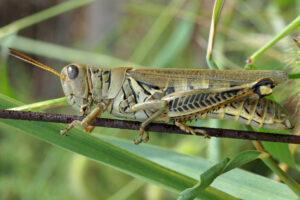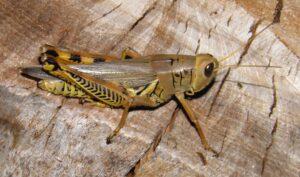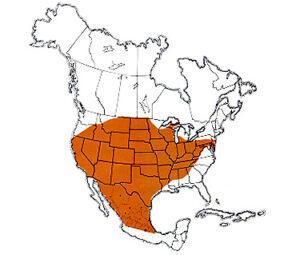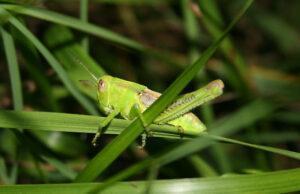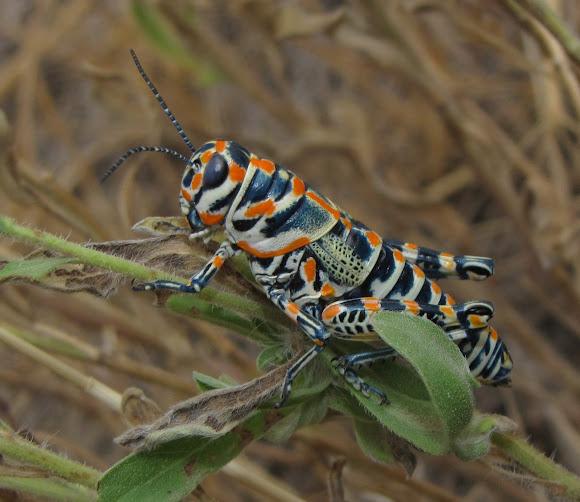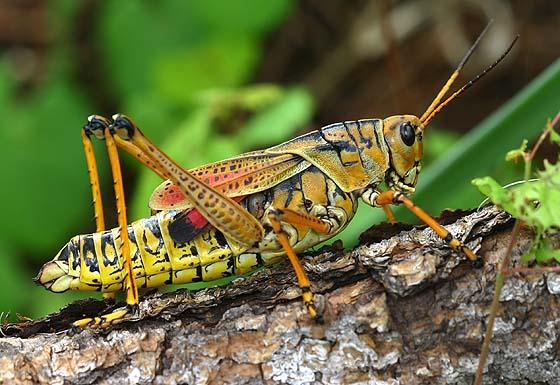Differential Grasshopper (Melanoplus differentialis)
Updated on
03/11/2022The differential grasshopper of the Melanoplus genus inhabits the central U.S and northern Mexico. Their range extends to several Canadian provinces like Saskatchewan, British Columbia, and Ontario. They have two subspecies: the M. d. differentialis and M. d. nigricans.
Scientific Classification
- Class:Insecta
- Order:Orthoptera
- Family:Acrididae
- Genus:Melanoplus
Conservation Status
Description and Identification
They are sexually dimorphic, and females with a length of around 50 mm are larger than males, who can be about 40 mm long. They can appear green, olive green, or brownish green, and the color darkens as they grow old. Some adults found in Nebraska, South Dakota, and Colorado have black bodies.
The color of their antennae varies from brownish-red to brownish-yellow, while their face and upper hind legs are marked with a herringbone pattern. The lower hind limbs are yellow and covered with saw-toothed black spines.
Males might even have long, boot-shaped appendages on the last segment of their abdomen. Like other grasshopper species, the differential grasshopper also has mandibles with which they chew plant tissues.
Distribution: Central United States, northern Mexico, southern Ontario, British Columbia, and southern Saskatchewan
Habitat: Open fields, grasslands, gardens, meadows,roadsides, prairies, and near streams, and ponds
Do They Bite / Sting: No; but may bite when in swarms or if threatened
Lifespan: 2-3 months
Predators: Field cricket, thread-waisted wasp, ground beetle, blister beetle, soldier beetle, tiger beetle, bee flies, robber flies
Behavior and Characteristics
Diet
These polyphagous have a varied diet that includes fruit trees, forbs, grasses, and crop plants. The common host plants of nymphs and adults include alfalfa, corn, cotton, soybean, blood ragweed, and giant ragweed. Adults often avoid sunflowers and wilted lettuce upon being able to detect chemical changes in them.
The nymphs remain close to the food source in their first and second instar. When they reach the third stage, they will get to the food source by crawling and hopping.
Migratory
If food is scarce within their range, the adults can travel about 10 miles to gather food. They mostly start flying at 9 in the morning under favorable temperatures as high as 81°F.
Life Cycle
Eggs
Around six egg masses are laid in soft soil by females, with 40-200 eggs per mass. The embryonic growth of eggs starts in summer, and by diapause (suspension of development), they have developed by about 54%. When growth resumes again, they will take around two weeks to hatch in the early summer of the following year. The olive-colored eggs reach a length of around 5 mm.
Nymphs
The nymphs go through a synchronized development and take around 32 days to develop into a winged adults.
Adults
The adults mostly remain active between July and October.
Damage Caused By Them
They are a menace to farmers since these grasshoppers attack in swarms and cause massive crop destruction.
Source
whatsthatbug.com, marylandbiodiversity.com, csvcoll.org, uwyo.edu,




